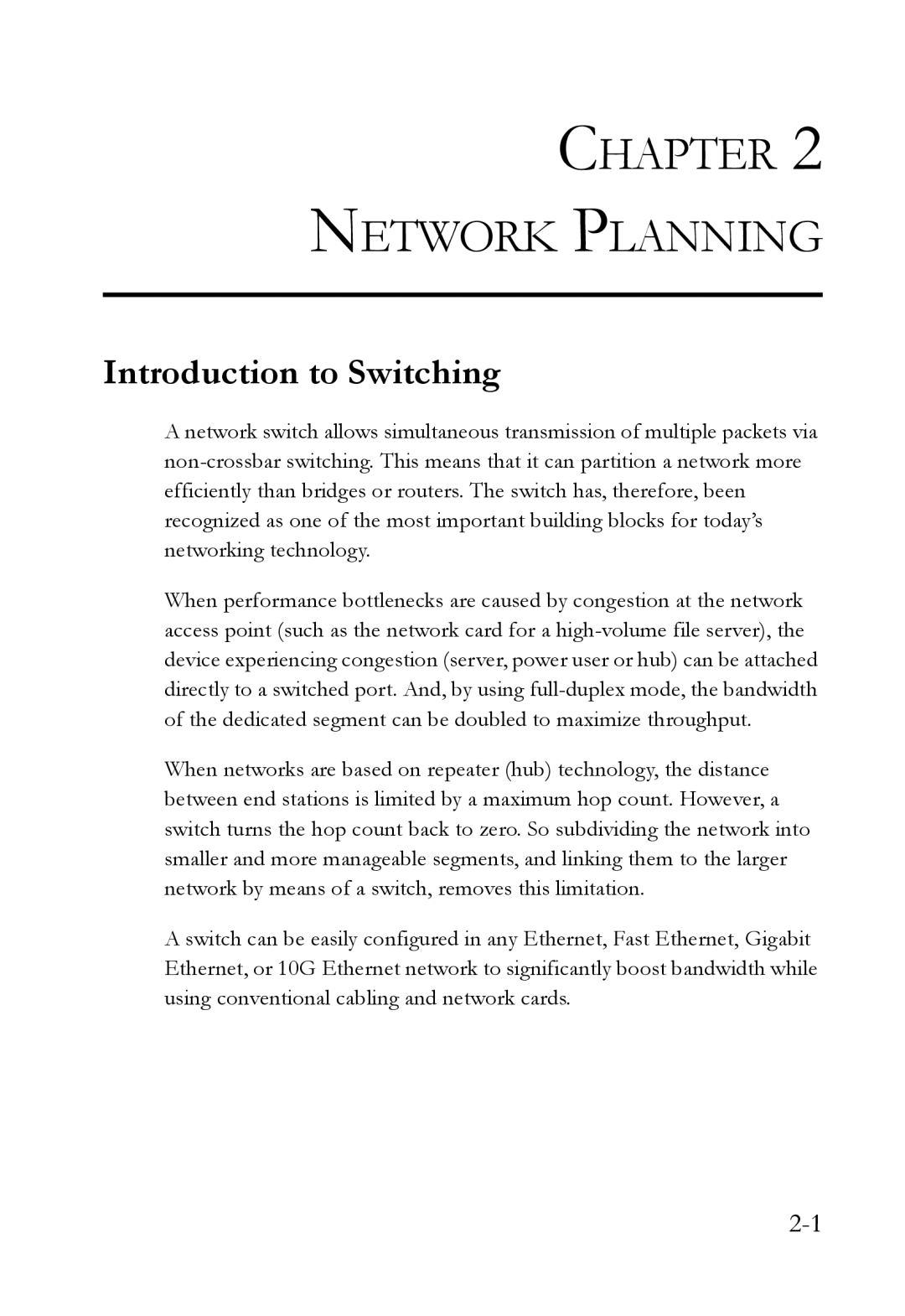CHAPTER 2
NETWORK PLANNING
Introduction to Switching
A network switch allows simultaneous transmission of multiple packets via
When performance bottlenecks are caused by congestion at the network access point (such as the network card for a
When networks are based on repeater (hub) technology, the distance between end stations is limited by a maximum hop count. However, a switch turns the hop count back to zero. So subdividing the network into smaller and more manageable segments, and linking them to the larger network by means of a switch, removes this limitation.
A switch can be easily configured in any Ethernet, Fast Ethernet, Gigabit Ethernet, or 10G Ethernet network to significantly boost bandwidth while using conventional cabling and network cards.
